Retry-ability
info
What you'll learn
- How Cypress retries commands and assertions
- When commands are retried and when they are not
- How to address some situations of flaky tests
A core feature of Cypress that assists with testing dynamic web applications is retry-ability. Like a good transmission in a car, it usually works without you noticing it. But understanding how it works will help you write faster tests with fewer run-time surprises.
info
If you are looking to retry tests a configured number of times when the test fails, check out our official guide on Test Retries.
Commands vs assertions
There are two types of methods you can call in your Cypress tests: commands and assertions. For example, there are 6 commands and 2 assertions in the test below.
it("creates 2 items", () => {
cy.visit("/"); // command
cy.focused() // command
.should("have.class", "new-todo"); // assertion
cy.get('[data-testid="new-todo"]') // command
.type("todo A{enter}") // command
.type("todo B{enter}"); // command
cy.get('[data-testid="todo-list"] li') // command
.should("have.length", 2); // assertion
});
The Command Log shows both commands and assertions with passing assertions showing in green.

Let's look at the last command and assertion pair:
cy.get('[data-testid="todo-list"] li') // command
.should("have.length", 2); // assertion
Because nothing is synchronous in modern web applications, Cypress can't query
all the DOM elements with the class todo-list and check if there are only two
of them. There are many examples of why this would not work well.
- What if the application has not updated the DOM by the time these commands run?
- What if the application is waiting for its back end to respond before populating the DOM element?
- What if the application does some intensive computation before showing the results in the DOM?
Thus the Cypress cy.get command has to be smarter and
expect the application to potentially update. The cy.get() queries the
application's DOM, finds the elements that match the selector, and then tries
the assertion that follows it (in our case should('have.length', 2)) against
the list of found elements.
- ✅ If the assertion that follows the
cy.get()command passes, then the command finishes successfully. - 🚨 If the assertion that follows the
cy.get()command fails, then thecy.get()command will requery the application's DOM again. Then Cypress will try the assertion against the elements yielded fromcy.get(). If the assertion still fails,cy.get()will try requerying the DOM again, and so on until thecy.get()command timeout is reached.
The retry-ability allows the tests to complete each command as soon as the assertion passes, without hard-coding waits. If your application takes a few milliseconds or even seconds to render each DOM element - no big deal, the test does not have to change at all. For example, let's introduce an artificial delay of 3 seconds when refreshing the application's UI below in an example TodoMVC model code:
app.TodoModel.prototype.addTodo = function (title) {
this.todos = this.todos.concat({
id: Utils.uuid(),
title: title,
completed: false,
});
// let's trigger the UI to render after 3 seconds
setTimeout(() => {
this.inform();
}, 3000);
};
My test still passes! The last cy.get('[data-testid="todo-list"]') and the
assertion should('have.length', 2) are clearly showing the spinning
indicators, meaning Cypress is requerying for them.

Within a few milliseconds after the DOM updates, cy.get() finds two elements
and the should('have.length', 2) assertion passes
Multiple assertions
A single command followed by multiple assertions retries each one of them -- in order. Thus when the first assertion passes, the command will be retried with first and second assertion. When the first and second assertion pass, then the command will be retried with the first, second, and third assertion, and so on.
For example, the following test has .should() and
.and() assertions. .and() is an alias of the
.should() command, so the second assertion is really a custom callback
assertion in the form of the .should(cb)
function with 2 expect
assertions inside of it.
cy.get('[data-testid="todo-list"] li') // command
.should("have.length", 2) // assertion
.and(($li) => {
// 2 more assertions
expect($li.get(0).textContent, "first item").to.equal("todo a");
expect($li.get(1).textContent, "second item").to.equal("todo B");
});
Because the second assertion
expect($li.get(0).textContent, 'first item').to.equal('todo a') fails, the
third assertion is never reached. The command fails after timing out, and the
Command Log correctly shows that the first encountered assertion
should('have.length', 2) passed, but the second assertion and the command
itself failed.
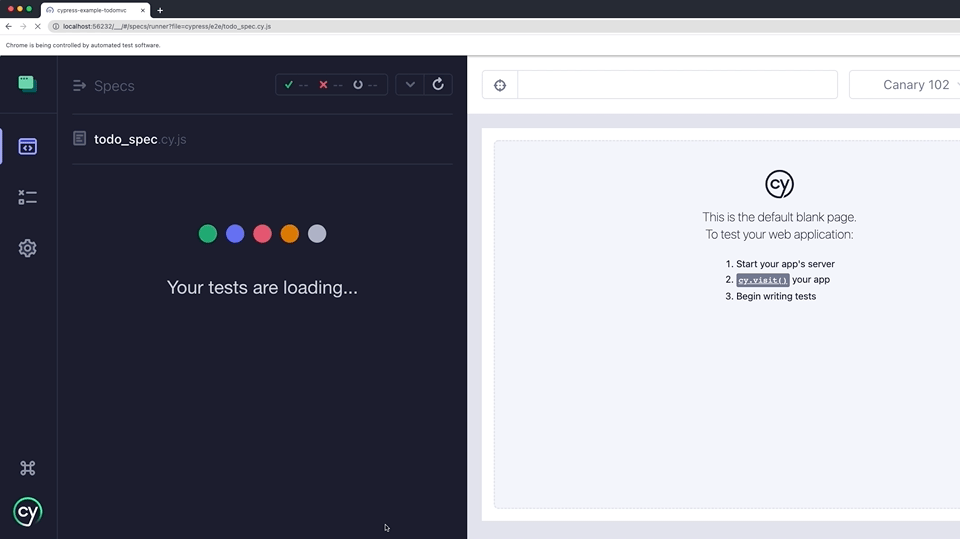
Not every command is retried
Cypress only retries commands that query the DOM:
cy.get(), .find(),
.contains(), etc. You can check if a particular
command is retried by looking at the "Assertions" section in its API
documentation. For example, "Assertions section" of
.first() tells us that the command is retried until all
assertions that follow it are passing.
- `.first()` will automatically [retry](/guides/core-concepts/retry-ability) until the element(s) [exist in the DOM](/guides/core-concepts/introduction-to-cypress#Default-Assertions)
- `.first()` will automatically [retry](/guides/core-concepts/retry-ability) until all chained assertions have passed
Why are some commands NOT retried?
Commands are not retried when they could potentially change the state of the application under test. For example, Cypress will not retry the .click() command, because it could change something in the application.
caution
Very rarely you may want to retry a command like .click(). We describe one
case like that where the event listeners are attached to a modal popup only
after a delay, thus causing default events fired during .click() to not
register. In this special case you may want to "keep clicking" until the event
registers, and the dialog disappears. Read about it in the
When Can the Test Click?
blog post.
Built-in assertions
Often a Cypress command has built-in assertions that will cause the command to
be retried. For example, the .eq() command will be retried
even without any attached assertions until it finds an element with the given
index in the previously yielded list of elements.
cy.get('[data-testid="todo-list"] li') // command
.should("have.length", 2) // assertion
.eq(3); // command
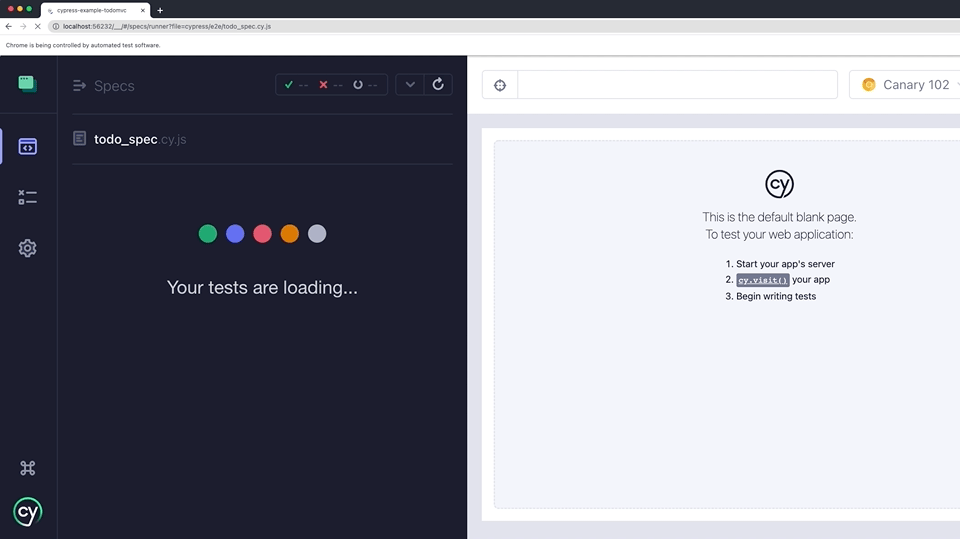
Some commands that cannot be retried still have built-in waiting. For example,
as described in the "Assertions" section of .click(), the
click() command waits to click until the element becomes
actionable.
Cypress tries to act like a human user would using the browser.
- Can a user click on the element?
- Is the element invisible?
- Is the element behind another element?
- Does the element have the
disabledattribute?
The .click() command will automatically wait until multiple built-in assertion
checks like these pass, and then it will attempt to click just once.
Timeouts
By default each command that retries, does so for up to 4 seconds - the
defaultCommandTimeout setting.
Increase time to retry
You can change this timeout for all commands. See Configuration: Overriding Options for examples of overriding this option.
For example, to set the default command timeout to 10 seconds via the command line:
cypress run --config defaultCommandTimeout=10000
We do not recommend changing the command timeout globally. Instead, pass the
individual command's { timeout: ms } option to retry for a different period of
time. For example:
// we've modified the timeout which affects default + added assertions
cy.get('[data-testid="mobile-nav"]', { timeout: 10000 })
.should("be.visible")
.and("contain", "Home");
Cypress will retry for up to 10 seconds to find a visible element of class
mobile-nav with text containing "Home". For more examples, read the
Timeouts section in
the "Introduction to Cypress" guide.
Disable retry
Overriding the timeout to 0 will essentially disable retrying the command,
since it will spend 0 milliseconds retrying.
// check synchronously that the element does not exist (no retry)
// for example just after a server-side render
cy.get('[data-testid="ssr-error"]', { timeout: 0 }).should("not.exist");
Only the last command is retried
Here is a short test that demonstrates some flake.
- End-to-End Test
- Component Test
it('adds two items', () => {
cy.visit('/')
cy.get('[data-testid="new-todo"]').type("todo A{enter}");
cy.get('[data-testid="todo-list"] li')
.find("label")
.should("contain", "todo A");
cy.get('[data-testid="new-todo"]').type("todo B{enter}");
cy.get('[data-testid="todo-list"] li')
.find("label")
.should("contain", "todo B");
});
it('adds two items', () => {
cy.mount(<Todos />)
cy.get('[data-testid="new-todo"]').type("todo A{enter}");
cy.get('[data-testid="todo-list"] li')
.find("label")
.should("contain", "todo A");
cy.get('[data-testid="new-todo"]').type("todo B{enter}");
cy.get('[data-testid="todo-list"] li')
.find("label")
.should("contain", "todo B");
});
The test passes in Cypress without a hitch.
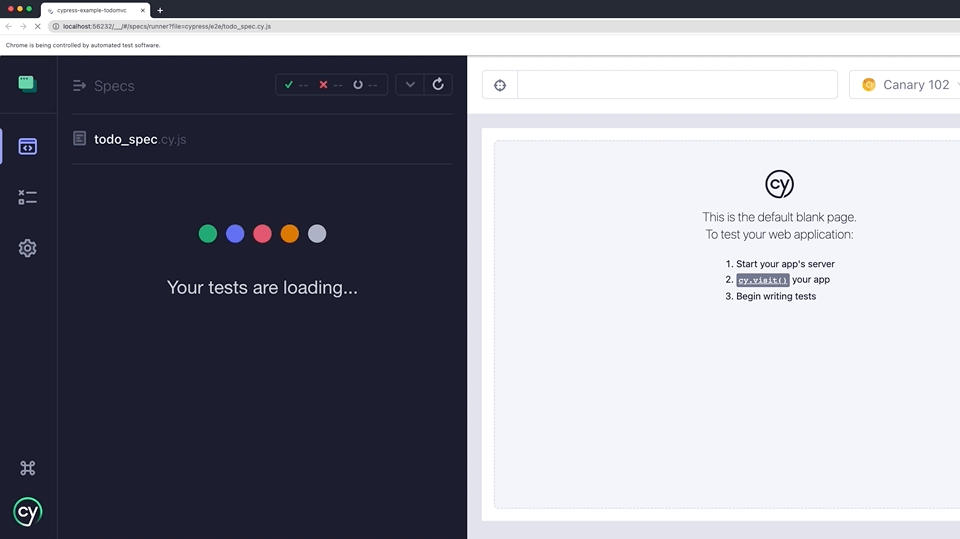
But sometimes the test fails - not usually locally, no - it almost always fails on our continuous integration server. When the test fails, the recorded video and screenshots are NOT showing any obvious problems! Here is the failing test video:

The problem looks weird - I can clearly see the label "todo B" present in the list, so why isn't Cypress finding it? What is going on?
Remember the delay we introduced into our application code that causes the test to time out? We added a 100ms delay before the UI rerenders itself.
app.TodoModel.prototype.addTodo = function (title) {
this.todos = this.todos.concat({
id: Utils.uuid(),
title: title,
completed: false,
});
setTimeout(() => {
this.inform();
}, 100);
};
This delay could be the source of our flaky tests when the application is running on our CI server. Here is how to see the source of the problem. In the Command Log, hover over each command to see which elements Cypress found at each step.
In the failing test, the first label was indeed found correctly:
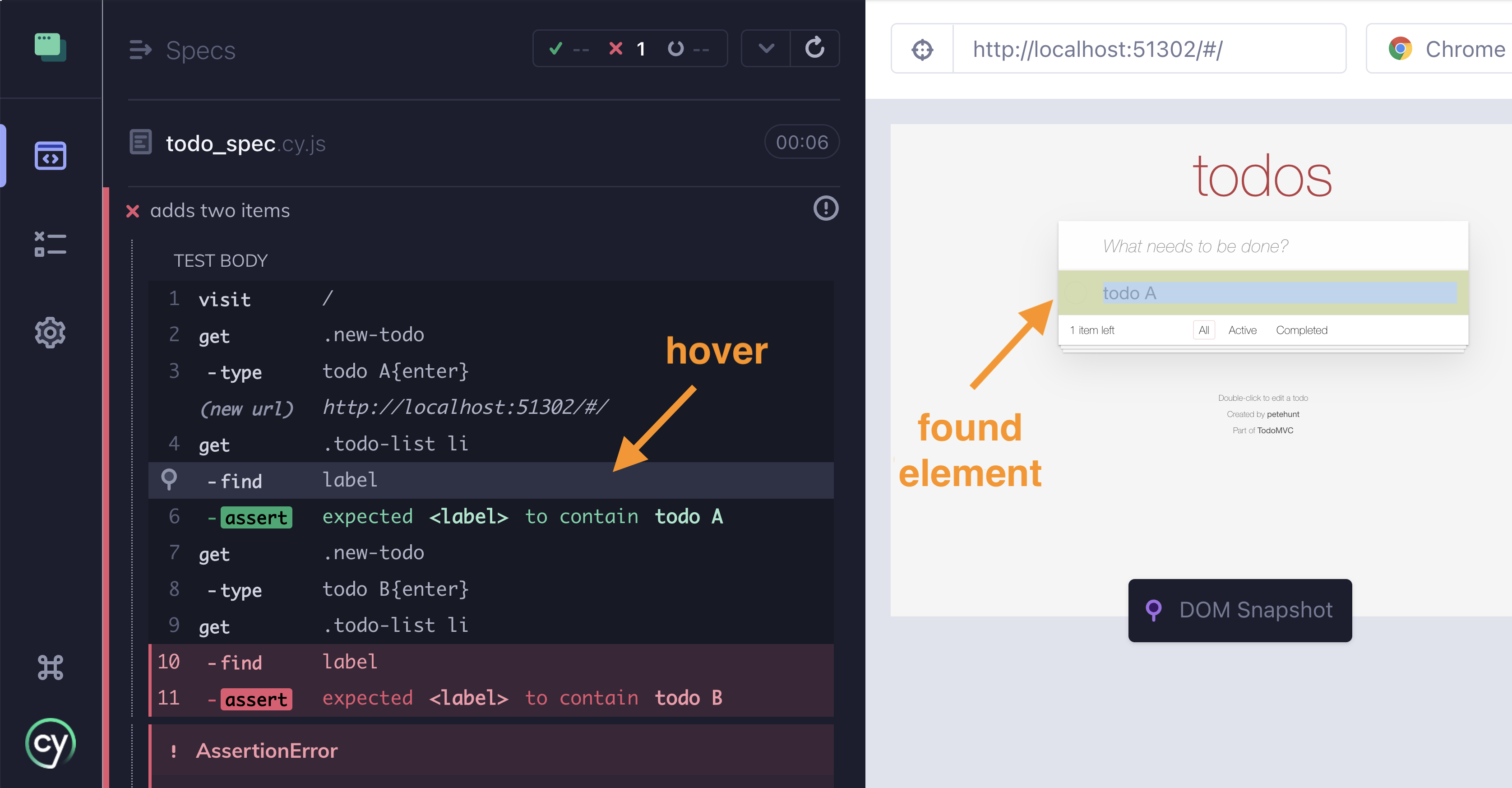
Hover over the second "FIND label" command - something is wrong here. It found the first label, then kept requerying to find the text "todo B", but the first item always remains "todo A".
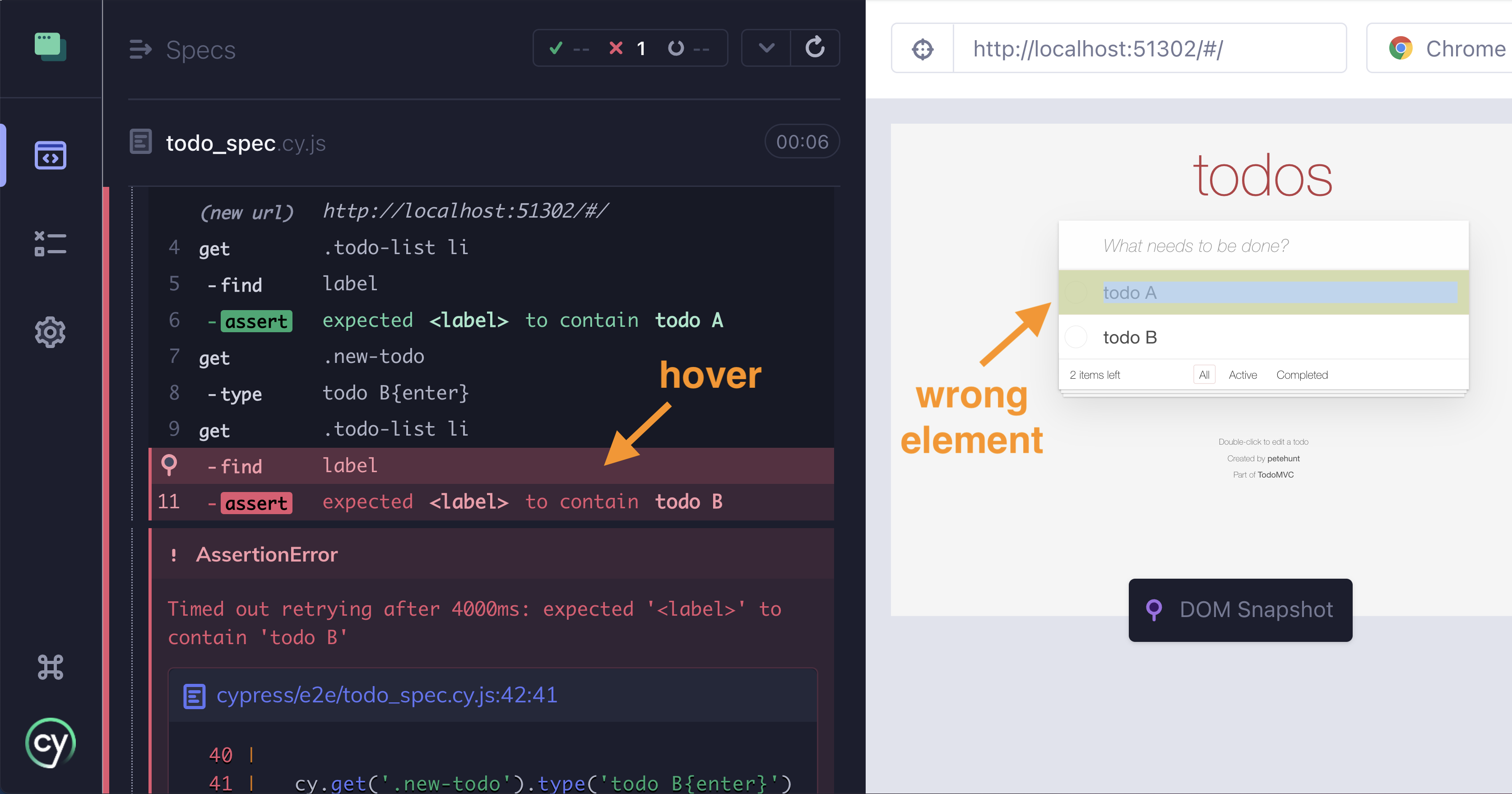
Hmm, weird, why is Cypress only looking at the first item? Let's hover over the "GET .todo-list li" command to inspect what that command found. Ohh, interesting - there was only one item at that moment.
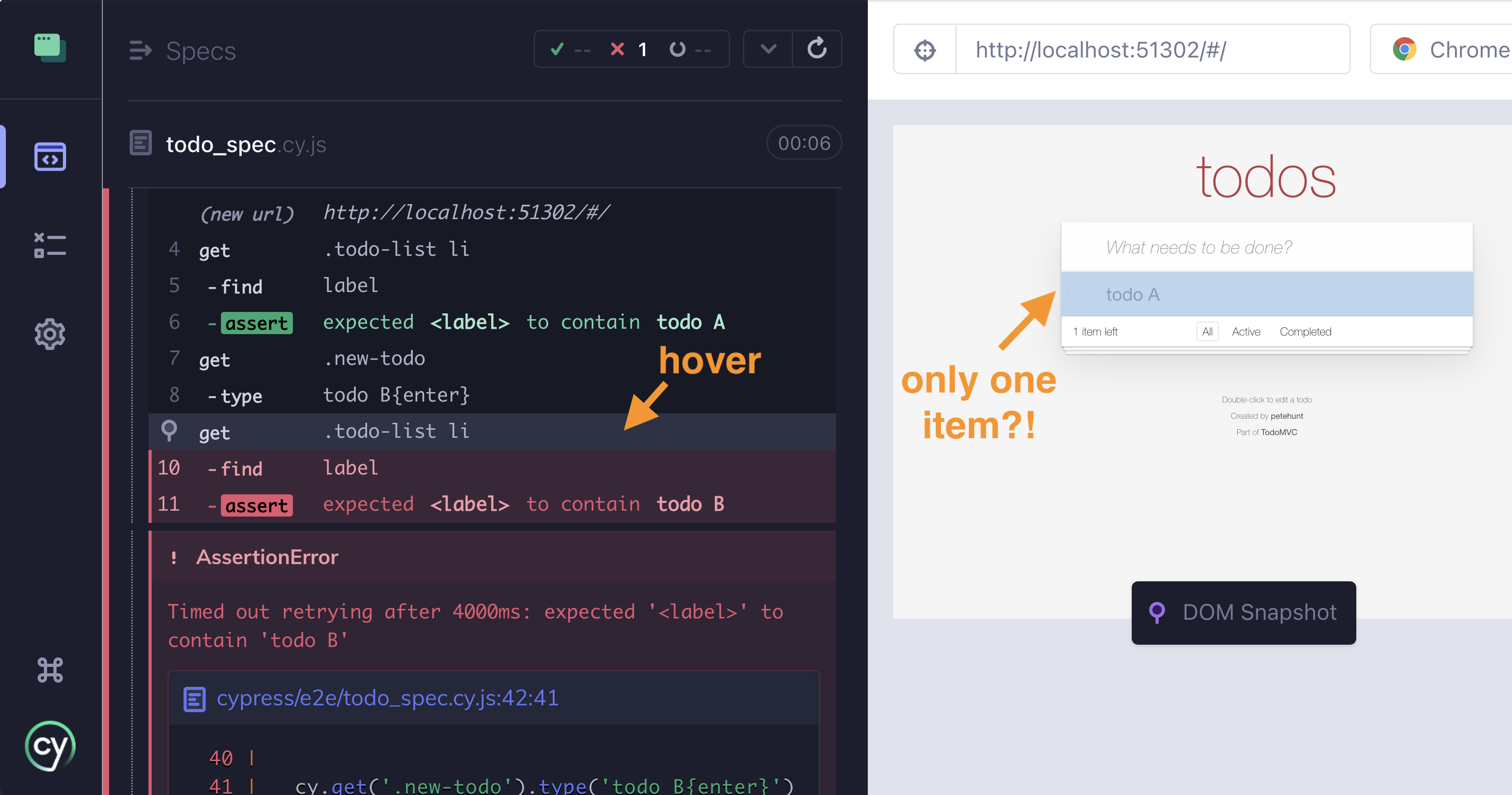
During the test, the cy.get('[data-testid="todo-list"] li') command quickly
found the rendered <li> item - and that item was the first and only "todo A"
item. Our application was waiting 100ms before appending the second item "todo
B" to the list. By the time the second item was added, Cypress had already
"moved on", working only with the first <li> element. It only searched for
<label> inside the first <li> element, completely ignoring the newly created
2nd item.
To confirm this, let's remove the artificial delay to see what's happening in the passing test.
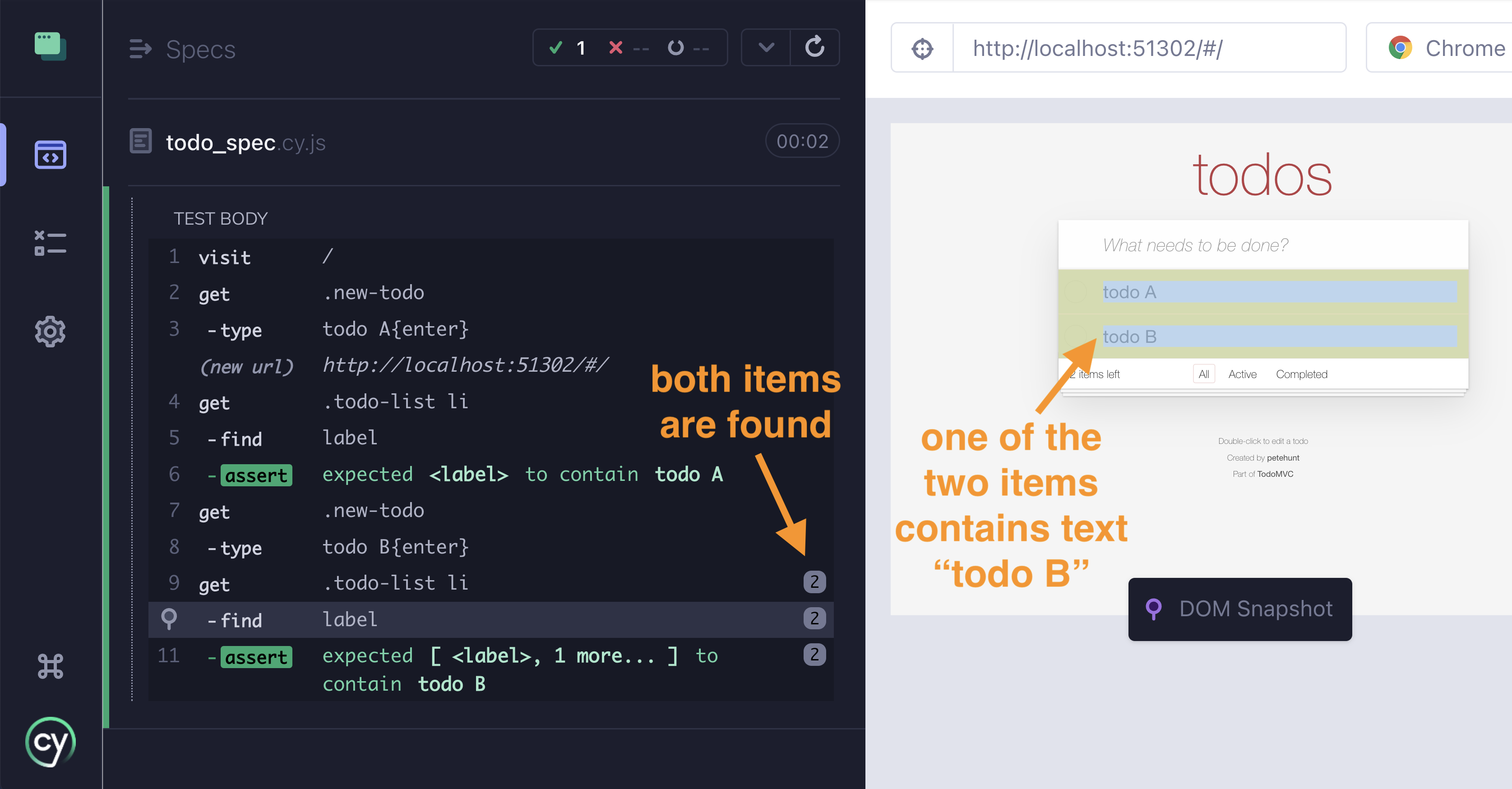
When the web application runs without the delay, it gets its items into the DOM
before the Cypress command cy.get('[data-testid="todo-list"] li') runs. After
the cy.get() returns 2 items, the .find() command just has to find the right
label. Great.
Now that we understand the real reason behind the flaky test, we need to think
about why the default retry-ability has not helped us in this situation. Why
hasn't Cypress found the 2 <li> elements after the second one was added?
For a variety of implementation reasons, Cypress commands only retry the last command before the assertion. In our test:
cy.get('[data-testid="new-todo"]').type("todo B{enter}");
cy.get('[data-testid="todo-list"] li') // queries immediately, finds 1 <li>
.find("label") // retried, retried, retried with 1 <li>
.should("contain", "todo B"); // never succeeds with only 1st <li>
Use retry-ability correctly
Luckily, once we understand how retry-ability works and how only the last command is used for assertion retries, we can fix this test for good.
Merging queries
The first solution we recommend is to avoid unnecessarily splitting commands
that query elements. Instead of
cy.get('[data-testid="todo-list"] li').find('label') we can combine two
separate queries into one - forcing the combined query to be retried.
- End-to-End Test
- Component Test
it('adds two items', () => {
cy.visit('/')
cy.get('[data-testid="new-todo"]').type("todo A{enter}");
cy.get('[data-testid="todo-list"] li label') // 1 query command
.should("contain", "todo A"); // assertion
cy.get('[data-testid="new-todo"]').type("todo B{enter}");
cy.get('[data-testid="todo-list"] li label') // 1 query command
.should("contain", "todo B"); // assertion
});
it('adds two items', () => {
cy.mount(<Todos />)
cy.get('[data-testid="new-todo"]').type("todo A{enter}");
cy.get('[data-testid="todo-list"] li label') // 1 query command
.should("contain", "todo A"); // assertion
cy.get('[data-testid="new-todo"]').type("todo B{enter}");
cy.get('[data-testid="todo-list"] li label') // 1 query command
.should("contain", "todo B"); // assertion
});
To show the retries, I increased the application's artificial delay to 500ms. The test now always passes because the entire selector is retried. It finds 2 list elements when the second "todo B" is added to the DOM.
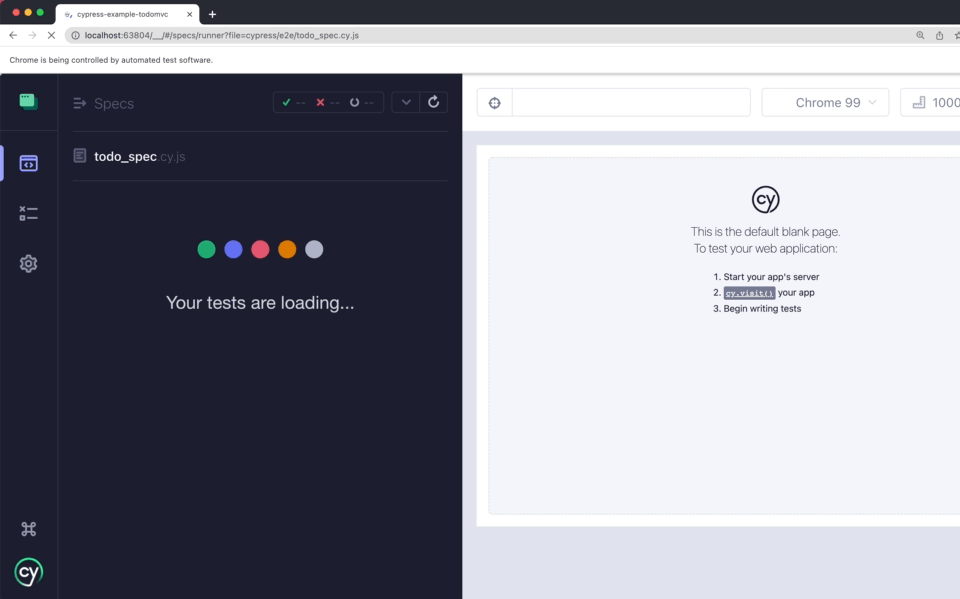
info
Tip: instead of cy.get(selector).should('contain', text) or
cy.get(selector).contains(text) chain, we recommend using
cy.contains(selector, text) which is retried automatically as a single
command.
cy.get('[data-testid="new-todo"]').type("todo A{enter}");
cy.contains('[data-testid="todo-list"] li', "todo A");
cy.get('[data-testid="new-todo"]').type("todo B{enter}");
// you can use a regular expression
// to match the text exactly
cy.contains('[data-testid="todo-list"] li', /^todo B$/);
Similarly, when working with deeply nested JavaScript properties using the
.its() command, try not to split it across multiple
calls. Instead, combine property names into a single call using the .
separator:
// 🛑 not recommended
// only the last "its" will be retried
cy.window()
.its("app") // runs once
.its("model") // runs once
.its("todos") // retried
.should("have.length", 2);
// ✅ recommended
cy.window()
.its("app.model.todos") // retried
.should("have.length", 2);
See the Set flag to start tests blog for the full example.
Alternate commands and assertions
There is another way to fix our flaky test. Whenever you write a longer test, we
recommend alternating commands with assertions. In this case, I will add an
assertion after the cy.get() command, but before the .find() command.
- End-to-End Test
- Component Test
it('adds two items', () => {
cy.visit('/')
cy.get('[data-testid="new-todo"]').type("todo A{enter}");
cy.get('[data-testid="todo-list"] li') // command
.should("have.length", 1) // assertion
.find("label") // command
.should("contain", "todo A"); // assertion
cy.get('[data-testid="new-todo"]').type("todo B{enter}");
cy.get('[data-testid="todo-list"] li') // command
.should("have.length", 2) // assertion
.find("label") // command
.should("contain", "todo B"); // assertion
});
it('adds two items', () => {
cy.mount(<Todos />)
cy.get('[data-testid="new-todo"]').type("todo A{enter}");
cy.get('[data-testid="todo-list"] li') // command
.should("have.length", 1) // assertion
.find("label") // command
.should("contain", "todo A"); // assertion
cy.get('[data-testid="new-todo"]').type("todo B{enter}");
cy.get('[data-testid="todo-list"] li') // command
.should("have.length", 2) // assertion
.find("label") // command
.should("contain", "todo B"); // assertion
});

The test passes, because the second cy.get('[data-testid="todo-list"] li') is
retried with its own assertion now .should('have.length', 2). Only after
successfully finding two <li> elements, the command .find('label') and its
assertion starts, and by now, the item with the correct "todo B" label has been
correctly queried.
Use .should() with a callback
If you have to use commands that cannot be retried, but need to retry the entire chain, consider rewriting the commands into a single .should(callbackFn) chained off the very first retry-able command.
Below is an example where the number value is set after a delay:
<div class="random-number-example">
Random number: <span id="random-number">🎁</span>
</div>
<script>
const el = document.getElementById("random-number");
setTimeout(() => {
el.innerText = Math.floor(Math.random() * 10 + 1);
}, 1500);
</script>

Incorrectly waiting for values
You may want to write a test like below, to test that the number is between 1 and 10, although this will not work as intended. The test yields the following values, noted in the comments, before failing.
// WRONG: this test will not work as intended
cy.get('[data-testid="random-number"]') // <div>🎁</div>
.invoke("text") // "🎁"
.then(parseFloat) // NaN
.should("be.gte", 1) // fails
.and("be.lte", 10); // never evaluates
Unfortunately, the .then() command is not retried. Thus the test only runs the entire chain once before failing.
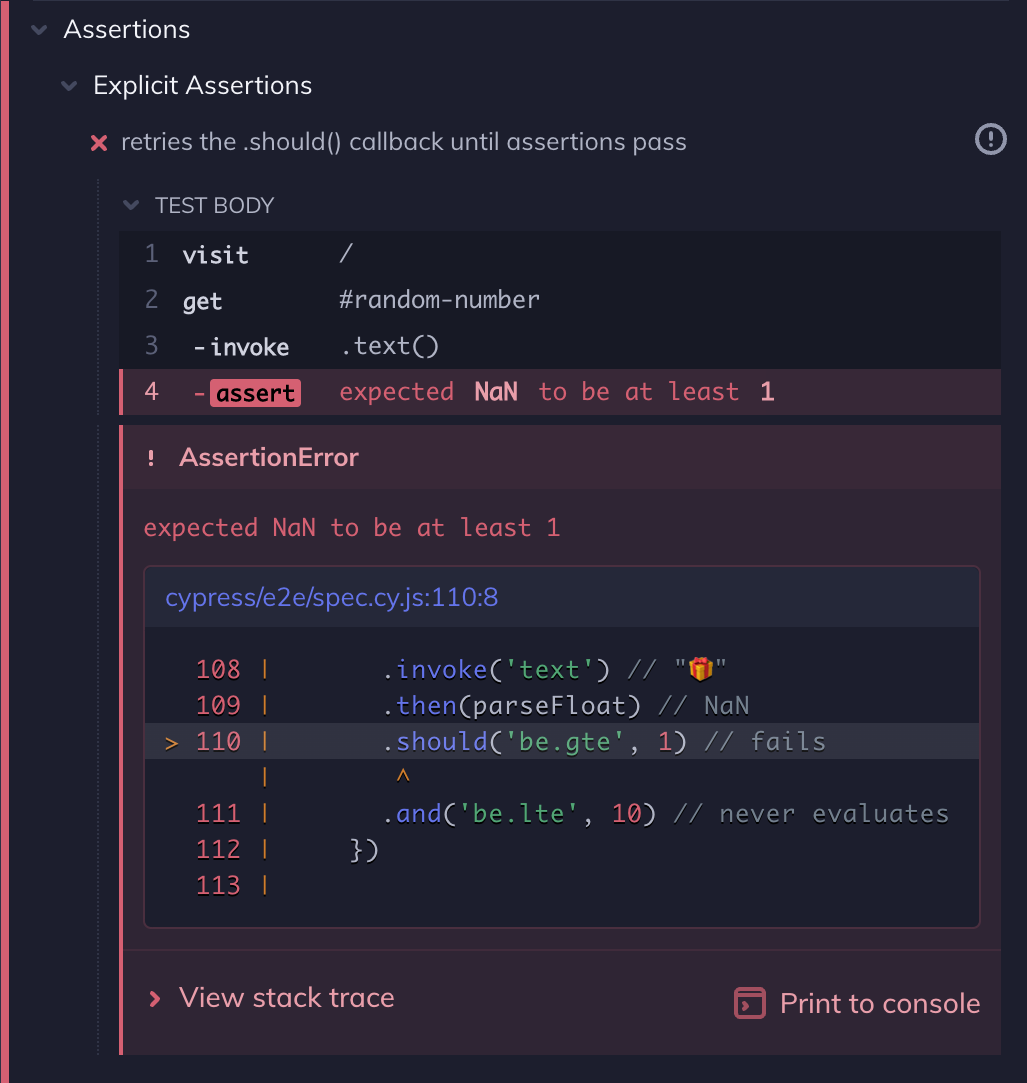
Correctly waiting for values
We need to retry getting the element, invoking the text() method, calling the
parseFloat function and running the gte and lte assertions. We can achieve
this using the .should(callbackFn).
cy.get('[data-testid="random-number"]').should(($div) => {
// all the code inside here will retry
// until it passes or times out
const n = parseFloat($div.text());
expect(n).to.be.gte(1).and.be.lte(10);
});
The above test retries getting the element and invoking the text of the element
to get the number. When the number is finally set in the application, then the
gte and lte assertions pass and the test passes.
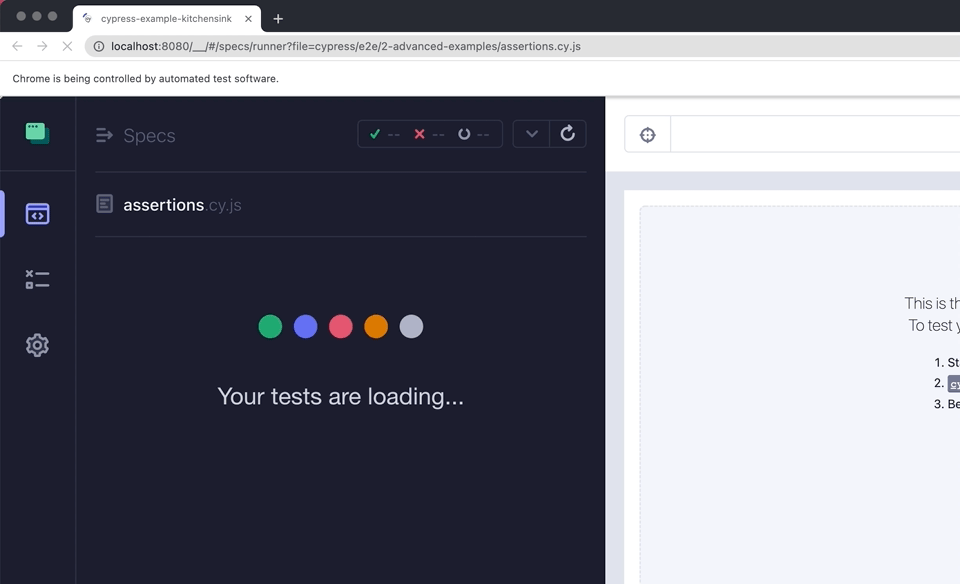
Use aliases
When using cy.stub() or cy.spy()
to test application's code, a good practice is to give it an alias and use the
cy.get('@alias').should('...') assertion to retry.
For example, when confirming that the button component invokes the click prop
testing with the
cypress/react
mounting library, the following test might or might not work:
Incorrectly checking if the stub was called
const Clicker = ({ click }) => (
<div>
<button onClick={click}>Click me</button>
</div>
);
it("calls the click prop twice", () => {
const onClick = cy.stub();
cy.mount(<Clicker click={onClick} />);
cy.get("button")
.click()
.click()
.then(() => {
// works in this case, but not recommended
// because .then() does not retry
expect(onClick).to.be.calledTwice;
});
});
The above example will fail if the component calls the click prop after a
delay.
const Clicker = ({ click }) => (
<div>
<button onClick={() => setTimeout(click, 500)}>Click me</button>
</div>
);
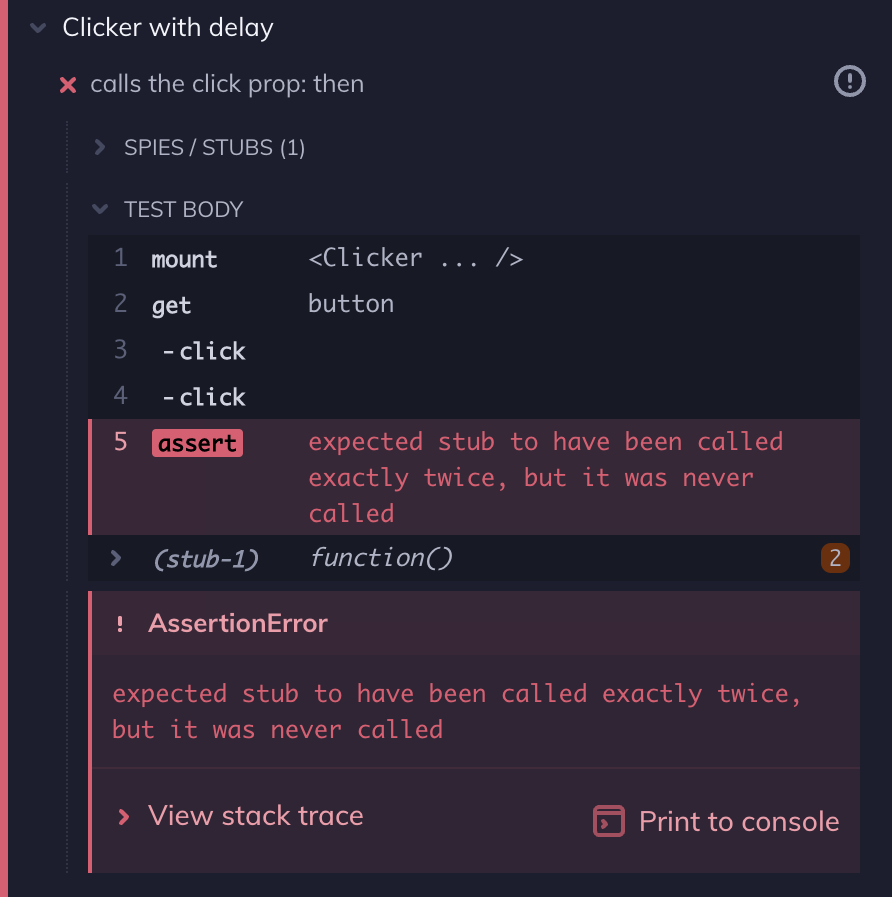
The test finishes before the component calls the click prop twice, and without
retrying the assertion expect(onClick).to.be.calledTwice.
Correctly waiting for the stub to be called
We recommend aliasing the stub using the .as command and
using cy.get('@alias').should(...) assertions.
it("calls the click prop", () => {
const onClick = cy.stub().as("clicker");
cy.mount(<Clicker click={onClick} />);
cy.get("button").click().click();
// good practice 💡
// auto-retry the stub until it was called twice
cy.get("@clicker").should("have.been.calledTwice");
});
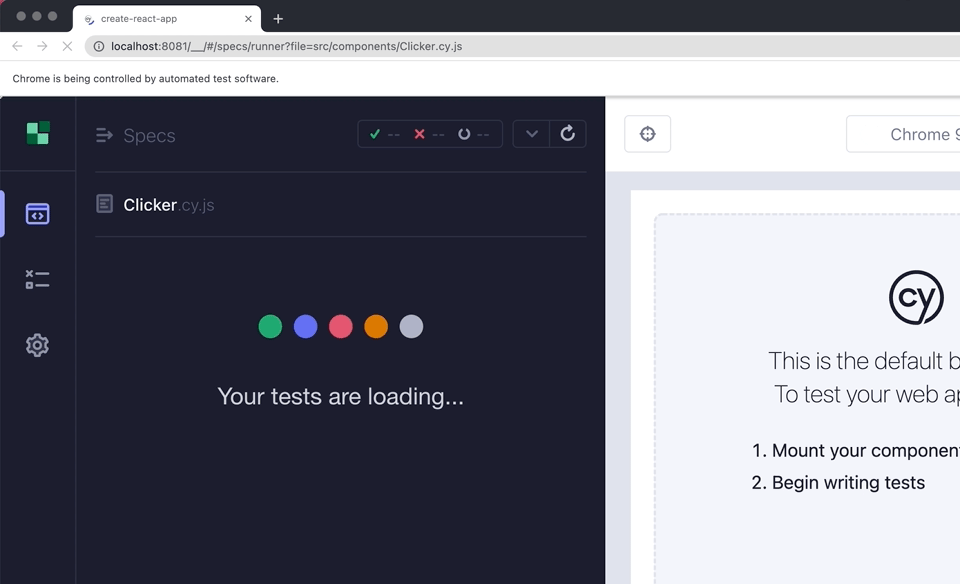
Watch the short video below to see this example in action
See also
- Read our blog posts about fighting the test flake.
- You can add retry-ability to your own custom commands; see this pull request to cypress-xpath for an example.
- You can retry any function with attached assertions using the 3rd party plugins cypress-pipe and cypress-wait-until.
- 3rd party plugin cypress-recurse can be used to implement the visual testing with retry-ability for canvas elements
- See retry-ability examples in the Cypress should callback blog post.
- To learn how to enable Cypress' test retries functionality, which retries tests that fail up to the configured number, check out our official guide on Test Retries.